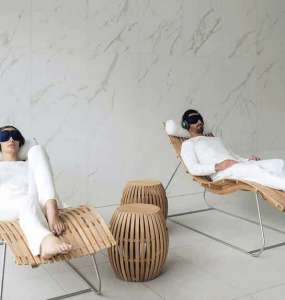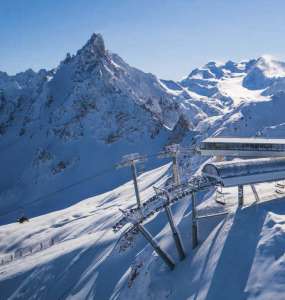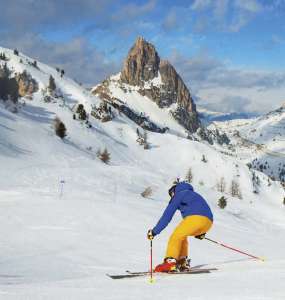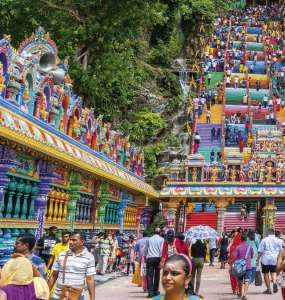Treasures of the Indian Ocean
Seychelles, Mauritius, Zanzibar - three destinations for those who dream of summer.
Seychelles
What Seychelles is good for is the possibility of constantly changing the picture in front of your eyes. 115 islands, countless beaches - famous and those that belong only to you, coral of 174 species and fish of a thousand species, five varieties of marine and giant land turtles. Esmeralda, the world's oldest member of the species, is 170 years old. Despite its female name, it is a male and lives on Bird Island. On the same island nest 20 species of birds and gather millions of birds.
.jpg)
And how many sharks there are in Seychelles! Hammerheads, nurse sharks, bull sharks, reef sharks and whale sharks! In the lagoons of St. Joseph Atoll shark babies gain strength. In the waters of the Outer Coral Islands swim humpback whales, they can be seen there with calves. There are also the fastest fish of the planet - sailfish, with them organized snorkeling.
Seychelles is also coco-de-mer and the rarest plant of the planet - medazugina (there are only 30 of these trees left in the wild and all of them are on Mahe). The landscape is also amazingly diverse: smooth granite boulders, forested mountains and even dunes 30 meters high! There are such sand hills on Assampshen Island near Aldabra Atoll (Outer Coral Islands). This, in turn, is home to 100,000 giant tortoises (that's more than the entire population of the country).
Seychelles can be explored on cruises: short pleasure cruises and multi-day cruises, as well as by helicopter. For panoramic views, climb Morne Seychellois or other peaks. Visit tea plantations and old rum-producing estates.
.jpg)
Experience the rustic life of bygone centuries at Domaine De Val Des Pres and sample the Creole cuisine of Marie Antoinette's, the country's oldest restaurant. With the kids, go on a pirate treasure hunt. From early 2024, appreciate the new 6-star Waldorf Astoria Seychelles Platte Island on the private Platte Island of the Outer Islands group. There, watch bisses lay eggs, swim with mantas and whale sharks, and explore the underwater world with a marine biologist.
Mauritius
In 2022, the World Travel Awards recognized Mauritius as the best destination for adventure holidays in the Indian Ocean. There is snorkeling, wind and kite surfing, swimming with dolphins and whale watching, skydiving and mountain climbing. But Mauritius is interesting not only for entertainment, but also for sightseeing. The Seven Colored Lands of Chamarel, Le Morne-Braban Peninsula, Pamplemousses Botanical Gardens, Sugar Museum, which collection even includes locomotives and a barge on which sugar from Mauritius was transported to Madagascar, do not need any recommendations.
There are magnificent colonial estates all over the island, the oldest of which, Château de Villebague, dates back to 1740 and can only be visited with the permission of the owners. Among the most famous is Domaine de Labordonnais (1856), where you are immersed in a 19th-century atmosphere. It has its own gardens, production of jams and juices, as well as a rum distillery, which offers classic rum and flavors of vanilla, ginger, spices, coffee, lemongrass. Rum connoisseurs will also be interested in visiting the Rhumerie de Chamarel.
.jpg)
The Tea Route passes through Domaine des Aubineaux, Bois Chéri and Saint Aubin. This beverage became popular in Mauritius under the French, and already the British established tea production on an industrial scale. And today 700 tons of tea with different additives are produced annually from the plantations of Bois Cherry: with zest, peppermint and thyme, coconut. And the local population prefers tea with vanilla.
On Belle Ombre, on the territory of former sugar plantations, there is a resort complex with hotels and restaurants in historic mansions, as well as the Heritage Golf Club, which has repeatedly hosted the national stage of the DP World Tour Championship. From December 2023, the club will open the first links golf course in the Indian Ocean Islands. The local Shell Museum has 8 thousand exhibits.
Mauritius has many amusement parks. In the south, La Vallée Des Couleurs (The Valley of Color) with 23 shades of earth, a 3-kilometer ziplane and bike ziplane, buggy and off-road vehicle tours, and La Vanille Nature Park, a contact zoo with giant tortoises, lemurs, monkeys and farm animals. Casela Nature Parks in the west invites you into the world of safari with zebras, rhinos, lions, caracals and giraffes; you can feed camels, ride ziplines and walk across suspension bridges - dozens of family and extreme activities await. On the eastern side is the Splash N Fun water park. Mauritius also has Surf Island with water activities and golf.
.jpg)
To the east is the exclusive resort of Belle Mare with secluded beaches and spacious lagoons. Its newest addition is the LUX* Belle Mare. On this side you can climb Lion Mountain with panoramic views, swim in waterfalls and enjoy organic farm life in the Ferne Valley. As well as attending a traditional pirogue boat regatta with a history dating back 150 years.
Grand Baie in the north of the island will delight those who are just getting started after the sun goes down: shopping, dancing, partying to the rhythms of DJs and live music. And if you prefer to experience a little bit of everything, choose a car tour, where you can comfortably see the whole country.
Zanzibar
The Zanzibar archipelago is located 35 kilometers from mainland Tanzania. It consists of two main islands, Zanzibar (Unguja) and Pemba, and more than 50 smaller islands and islets. Perfect sandy beaches, diving to coral reefs, kitesurfing, dhow cruises (the boats are built here in Nungwi), horseback riding along the coast, meeting the Maasai, excursions to seaweed farms, The Rock restaurant in the middle of the ocean, swimming in cave lakes and drum lessons await you.
Zanzibar is called the Spice Islands. They began to be cultivated under the Persians more than a thousand years ago. Strangers brought Islam to the islands, and the Kizimkazi Mosque, which survives from the 12th century, was the first Muslim temple in the Southern Hemisphere. Today, there are more than 50 mosques in Stone Town alone. At the end of the 15th century, with the arrival of the Portuguese Vasco da Gama, the whole of Europe became aware of Zanzibar as a center of spice cultivation. For two hundred years the islands were a Portuguese colony until 1698 when they became part of the Sultanate of Oman. Under Omani rule, clove plantations flourished on the islands and Zanzibar became a world center for this spice, but the local population was used as free labor. In 1840 Zanzibar became the capital of the Sultanate, and half a century later it came under British protectorate. Spice cultivation still plays an important role in Zanzibar's economy today, now also in terms of tourism. Specialized farms offer tastings and cooking workshops. Some hotels also have their own farms.
.jpg)
The peoples who have lived in Zanzibar have left an imprint on the local culture and traditions. In Stone Town, the wooden, ornately carved doors are an eye-catcher. For centuries, the construction of a house in Zanzibar began with the making of doors. They spoke of the status and occupation of the owner. Wavy patterns indicated that it was the home of a sailor, fish scenes distinguished the dwelling of a fisherman. If a vine was depicted on the door, the owner was a spice merchant. And chains indicated that a slave trader lived here. Weaving traditions are also rich: the whole family takes part in it, and as a sign of respect, the work is started by the eldest woman, the mother of the family.
The natural world of Zanzibar is rich and diverse. It is home to endemic Kirk's colobus, vervet and serval genets, as well as leopards, fur-tailed mongooses, blue duikers, baby galagos, dolphins and dugongs, sea and giant land turtles, nectarfish, Indian ringed parrots and gray-headed lovebirds. Dense jungle and mangrove forests cover the islands, and the baobab is the botanical symbol of Zanzibar.
Many hotels are located on the larger islands. But there are also luxury options in the format "one island - one hotel", for example, Thanda Island as part of the Mafia Archipelago. It provides its own yacht, boat and catamaran, not to mention kayaks, SUPs, water skis and diving equipment. From October to March, guests can swim with whale sharks, who come here to feed. There is also a tennis court and volleyball court on the island. It is also a habitat for white, gray and black herons.
Mnemba Island is home to the luxurious and eco-friendly andBeyond Mnemba Island. Green turtles lay eggs on its beaches, and the hotel itself is restoring the duiker population.
There are many new hotels in Zanzibar. The eco-friendly Ycona Luxury Resort Zanzibar on the east coast of the main island has its own jungle, botanical garden and spice garden on its grounds, which is guided on a tasting tour by a gardener. The 4 restaurants and 3 bars serve fresh catch from its own bay, as well as farm-to-table cuisine. There's haute cuisine and pizza from the wood-fired oven, private cooking shows at your villa, and tables can be served in the botanical garden and pool area too.
.jpg)
LUX* Marjani Zanzibar on the northeast corner of the main island is built and decorated by local artisans, its gardens feature endemic species, and the cuisine emphasizes wholesome dishes. The hotel has taken care of the pleasant and memorable moments, such as breakfasts on the beach, "forest baths," a "Wish Tree," messages in a bottle with gifts and surprises (such as a free spa treatment or romantic dinner), movies at the water's edge, and on-site night markets where you can enjoy street food, dance to folk music, and choose Maasai handmade souvenirs.
A beach vacation in Zanzibar is good on its own or as a complement to a safari in mainland Africa.




